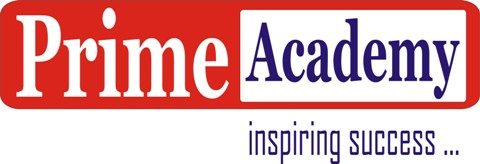Welcome to Prime Academy Delhi
For getting access of recorded video lectures of Introductory Micro Economics for General Elective Semester I, Delhi University
you need to subscribe our course.
If you are not registered at our website then Register Here (After registration please inform us at +91 9899 192027 to get the access)
If you are already registered and have Got the access then Login to watch the Lectures
The Introductory Micro Economics Course for General Elective Semester I, Delhi University has been taught by Mr. Dheeraj Suri. The Video Lectures are based upon the books prescribed by the University of Delhi. The Duration of Video Lectures is approximately 50 Hours.
Course Fee : Rs. 7000
Access of Video Lectures is provided on one device, Windows Computer or Android Phone, till end of Semester I Exams.
Once You get the access you need to login and download our APP and all the lectures from your login account and play in your device.
You will Get
- Full Course Video Lectures
- Complete Study Material (PDF Notes) which includes Concepts, Previous Year Questions, Numerical Questions, MCQ’s and Important Questions
- Online Discussion Forum to Post Your Queries to Discuss with Faculty & other fellow Students
- Live online Doubts Sessions for resolution of Doubts
- Mock Tests at the Website
- Video Lectures Cover Theory Portions Exchaustively + Complete Solutions of Back Questions of readings + Solutions of Previous Years Papers + Large Number of Numericals
On Payment of Fee we will create your account on our website & you need to login and download all the lectures & our APP through that login account
Access of Video Lectures is provided on one device, Windows Computer or Android Phone, till end of the Semester Exams
How to Join our Coaching Classes
1. Fee Deposit
Kindly deposit the fee using the following payment details
2. Registration
Register at the website
3. Details
Share the payment details & your login id through Whatsapp at +91 9899192027
4. Need Help
Reach us at +91 9899192027
Payment Details
To purchase any course you need to transfer the amount either through Google Pay or PhonePe at 9811261671 or Paytm at 9899192027 or Transfer through net banking IMPS into the following account
Account Details
Dheeraj Suri
Saving Account Number
392010100053871
Axis Bank, Model Town Branch
Delhi – 110009
IFS Code : UTIB0000392
Payment App Details
GPay Number : +91 9811261671
PhonePe Number : +91 9811261671
Paytm Number : 9899192027
After transfer update us with payment details through Whatsapp at +91 9899192027
Demo Lectures
Demo PDF of Study Material
Loading...
